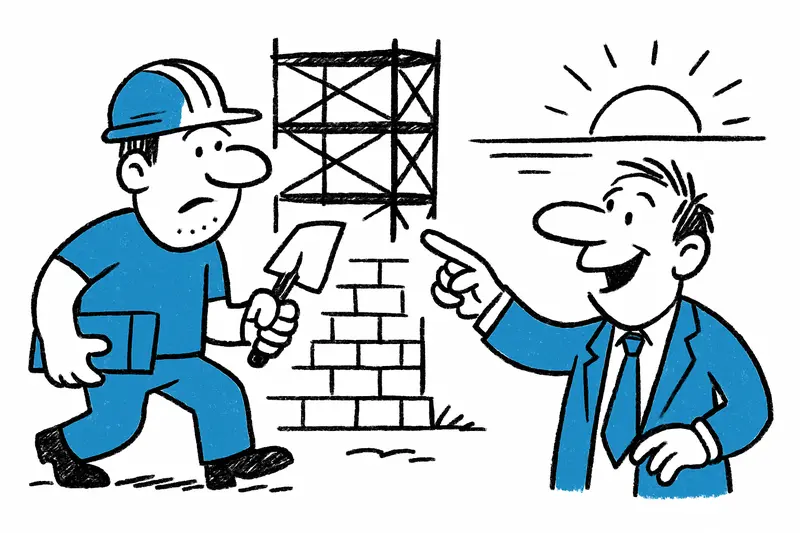Tradespeople, planners, and authorities report more inquiries: Renovations and public projects are expected to pick up significantly in 2026 — creating work but also new questions.
More Work in Sight: The Construction Industry on the Balearic Islands Expects Growth
\nOver the past few weeks it's been noticeable on construction sites: early crews, delivery vans, and the small bakery on the corner that now opens earlier because masons grab a coffee before their shift.
\nRenovations and New Construction Projects Drive Demand
\nThe Architects' Association expects up to 37 percent growth in repair and modernization work. At the same time, developers anticipate about 40 percent more new-build projects than before. That sounds like a lot of activity along well-known streets like Plaça Major or on the outskirts of Palma—and yes, it also means morning construction traffic.
\nWhat this means: public authorities awarded contracts totaling around €442 million in the first three quarters of the year. Larger projects mentioned include work at Palma Airport, the planned construction of a hospital in Felanitx, and a new school in Llucmajor. Such projects act like a door-opener: small carpentry firms, electricians, and suppliers secure direct follow-on orders.
\nWhat This Means for People on the Island
\nFor trades businesses, this means: orders, more employment, sometimes overtime. I spoke last week with a foreman from Palma, who said, 'Finally some planning certainty for at least a year.' On the other hand, critics warn that the strain on roads and residential areas is rising and that affordable housing does not automatically emerge from new projects.
\nClear question marks remain: How will the island cope with more construction traffic? Are there enough skilled workers and material capacities? And: Do the projects sufficiently contribute to climate goals and heritage protection? Many decisions are made at the municipal level — and that’s why town halls and tendering play a major role.
\nA Cautiously Optimistic Outlook
\nWhat stands out to me is that the mood is pragmatic, not exuberant. The figures point to a solid uptick, but execution will be the real test. For residents this means more noise periods, more construction site traffic signals—and for businesses, new orders. The coming months will show whether the promised sums actually flow into roads, schools, and hospitals or if projects are delayed.
\nThose who look closely already see changes: new scaffolders on Harbor Street, planning documents on the board in the town hall corridor, and tradespeople who are already at the material depot at 7 a.m. It's not a pop-up boom, but a tangible return of work to an industry that had waited a long time for the next contract.
Similar News

More Staff for Mallorca's Trains and Metro: What Passengers Can Expect Now
The Balearic government plans to significantly expand the SFM workforce—from 170 employees today to more than 50 percent...

Balearic Islands: Construction Industry Poised for a Strong Upswing - What It Means for the Islands
More contracts, more renovations, more cranes over Palma: The construction industry in the Balearics expects substantial...

Mallorca Almond Harvest 2025: Less Yield, Higher Prices
The Mallorca almond harvest is over: about 1.3 million kilograms were harvested, around ten percent less than last year....

More tolerance for train delays in Mallorca: SFM raises threshold to eight minutes
The Mallorca railway company SFM now classifies arrivals up to eight minutes late as on time. Commuters and the Més part...

Investing in Olives: Why Mallorca Olive Plantations Are Attractive Now
More and more Mallorcans and finca owners are considering turning an unused plot into an olive plantation? Local, sustai...
More to explore
Discover more interesting content

Experience Mallorca's Best Beaches and Coves with SUP and Snorkeling

Spanish Cooking Workshop in Mallorca

Valldemossa and Valley of Sóller Tour in Mallorca

FUN Quad Mallorca

Shared 4-hour catamaran trip with tapas

